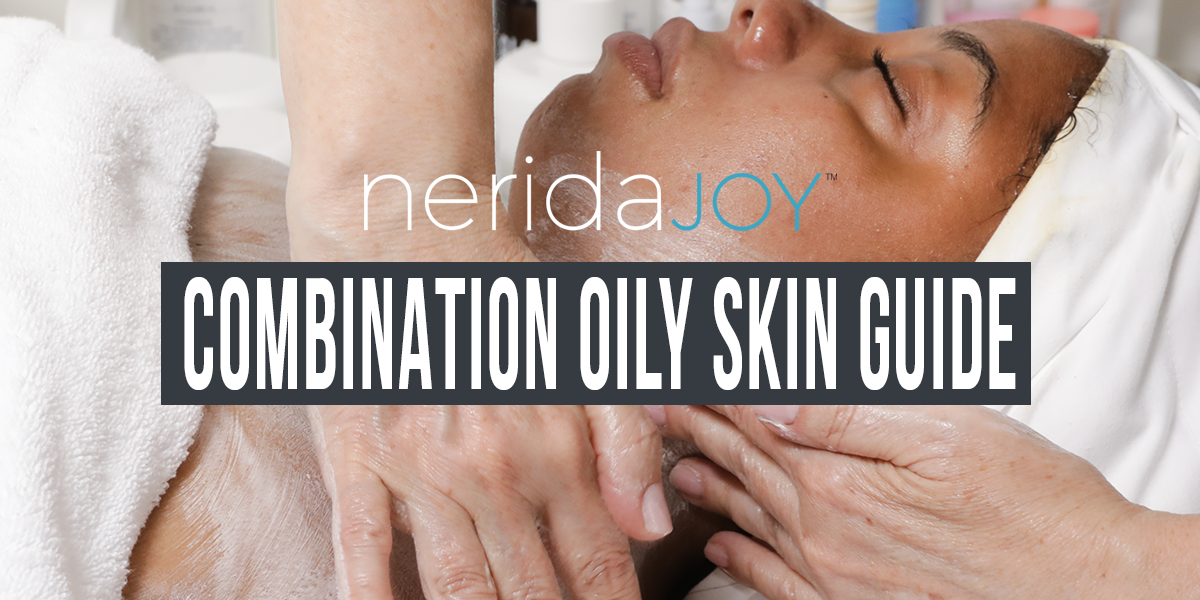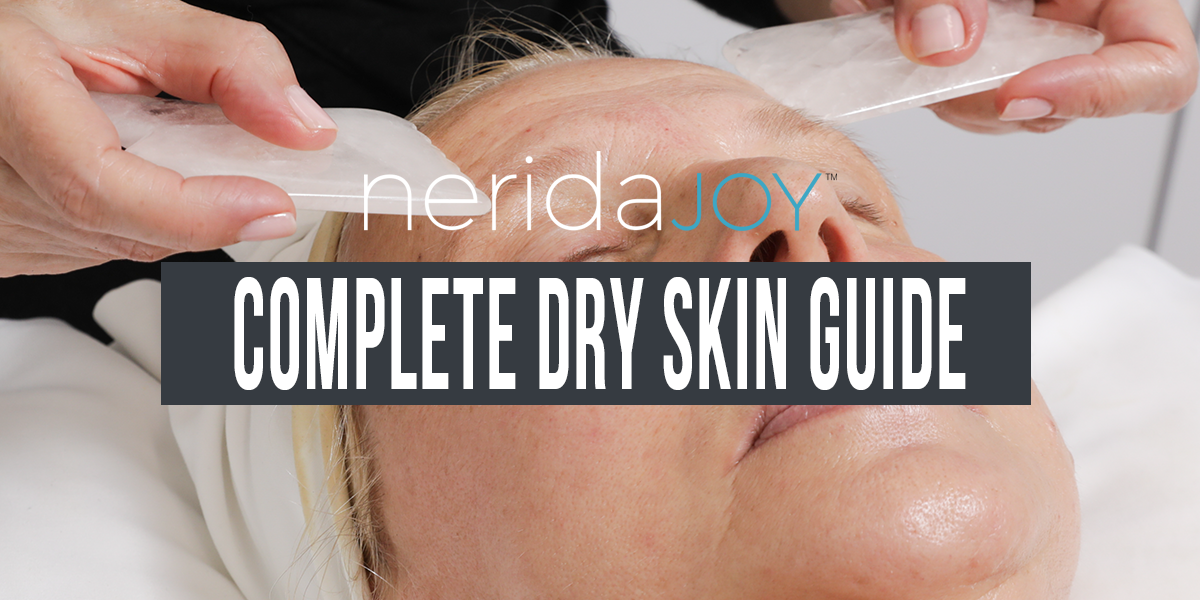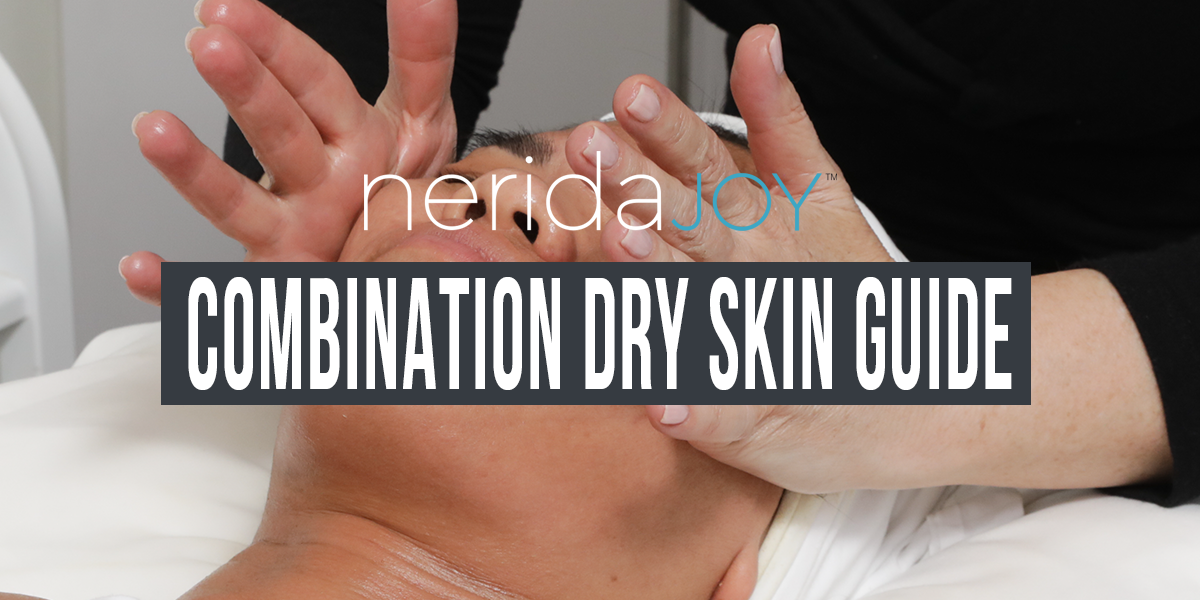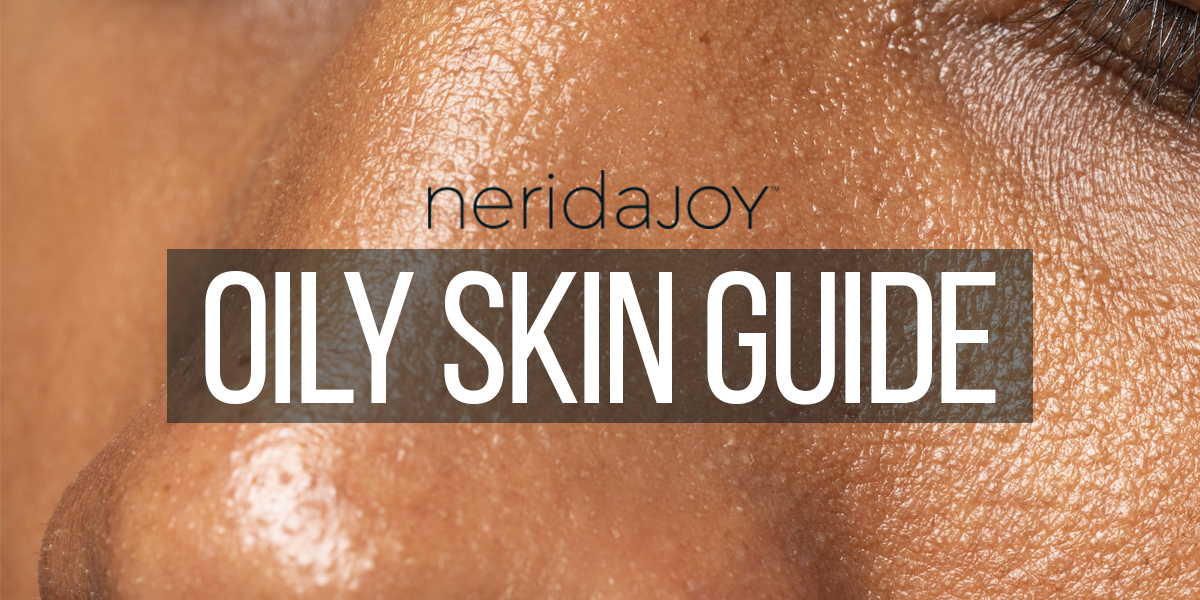How can I tell if I have a combination/oily skin type?
As with a true oily skin, this oily area can often be shiny throughout the day, with a more slippery feel to it caused by an over-production of sebum. Pores inside this area will be larger as well, and you’ll generally also see congestion and pimples – both the more surface-level pustules and the deeper, painful nodules of hormonal acne.
What sub-conditions affect combination/oily skin?
Surface dryness, large pores, congestion, scarring and pitting, sebaceous hyperplasia, milia and inflammation caused by acne. Also ruddiness, heat and sensitivity – which can include rosacea, dermatitis and eczema. Again, as with a true oily skin type, the skin may not heal quickly and you may need to feed it by applying healing nutrients to help address post-acne marks and scarring.
Is there an advantage to having a combination/oily skin?
A combination skin is considered a ‘normal’ skin. And because of the excess oil, you won’t see as many wrinkles in the oily areas.
Is there anything I should avoid?
You may wish to avoid congestion-causing foods: egg yolks, dairy products such milk, cheese and ice cream, peanuts, oily fish such as salmon and anything fatty, like fried foods. Processed white sugar and citrus can be an issue for teenagers as well, especially orange and other fruit juice.
You should also steer clear of using comedogenic products, especially on the oilier areas of your face. But it’s important to remember how a product is determined to be comedogenic: each individual ingredient is tested at a 100% concentration, but the formulation of the finished product is not generally taken into account. Formulas are key – the magic of chemistry is how even products containing some naturally comedogenic ingredients like pure coconut or mineral oil won’t necessarily clog your pores. The best thing is to make sure you’re using products that are more emollient and lighter in texture that will help repair the skin’s barrier without forming the kind of congestion-causing occlusive film.
What are the essential products I should use?
A good non-foaming cleanser that will keep your skin thoroughly cleansed without drying it, an exfoliant or a mask that has a buffing effect on the epidermis and will absorb dead skin cells, and a treatment product with an alpha hydroxy acid (AHA), salicylic acid (BHA) or a retinoid to refine your pores and keep oil activity under control.
What’s the best cleanser for my skin type?
A non-foaming gel or gelée cleanser, because it attaches to the grime that builds up on your skin and then completely lifts it off. One of the problems with foaming cleansers is that they often just grab air and not the grime itself. Your cleanser should be both lipophilic and hydrophilic, which means that it mixes both with water and oil to attract grime, sebum and dead skin cells and remove them correctly.
Choosing a good cleanser that will keep the skin soft and supple is important, but being thorough with your cleansing is really key Make sure to massage it into your face for a good 30 seconds, particularly in the evenings when it’s good to double cleanse, and then remove it with a clean, warm, wet washcloth.
What’s the best exfoliant?
An exfoliating product is a must for combination/oily skins because you have to keep your pores clean. Blackheads are made up of bacteria, dead cells and sebum – to lift them out of the pores, you need an exfoliant that has a buffing effect on the epidermis. Alpha hydroxy acids (AHAs) are great for that, as is papaya enzyme because it won’t irritate your skin.
Another fantastic ingredient that helps clean out the pores and reduce congestion is carya ovata bark extract. Also known as shagbark hickory, it’s included in the Step 1 Facial Cleanser because it’s a gentle exfoliant that’s suitable for a more sensitive skin.
What are the best serums?
Serums are a great delivery method for your active ingredients, which means either a retinoid such as a gentle non-prescription retinol or an AHA. The AHA family is made up of glycolic, lactic, malic, tartaric, mandelic or citric acids. A good AHA serum should contain at least two varieties because combining acids of different molecular weights and sizes means the serum will work across the different levels of your skin.
Because combination/oily skin often has pimples and will mark easily, it’s also important to use serums that are very healing. You can try a hyaluronic acid serum, which keeps oily skin hydrated without over-nourishing it; a peptide serum, because peptides are great body-builders; or something with rosa damascena flower oil, because it is hydrating and has powerful anti-inflammatory properties. Alternatively, palmarosa oil helps to balance sebum production and keep the skin soft and supple, and camphor oil helps to soothe even a sensitive skin and prevents irritation.
What’s the best moisturizer?
Your moisturizer should do a similar job to your serums by healing and supporting your skin. You should never apply an active serum and an active treatment moisturizer together at the same time, as that could be too strong for the skin and create other issues, but you can apply a good retinoid or AHA moisturizer over your healing serum to help control sebum production, heal post-acne scarring and keep your pore size small.
AHAs and the BHA salicylic acid are both good for combination/oily skin, particularly lighter skin tones. For types 1 and 2 on the Fitzpatrick scale, AHAs and BHAs are a safer choice than retinoids – especially when you’re younger. Types three and four respond well to both AHAs and retinoids, while types five and six do better sticking just to retinoids as AHAs can burn darker skin tones.
Whichever moisturizer you choose, make sure that it has a lighter, more emollient formulation and contains healing and soothing ingredients such as hyaluronic acid, palmarosa, camphor or rosa damascena flower oils.
And what’s best for my eye area?
You always want a separate eye product because the skin in this area is more delicate. Eye creams and gels both work well and should be used every morning and evening.
What are the most beneficial movements to support my skin?
Working your cleanser in with circular motions will help get underneath any fine, facial hair, which is where congestion-causing bacteria can build up. You can also massage in your products with upward motions to give your skin a boost.
What are the best tools to use?
Cryo sticks are good for soothing and calming inflamed skin and helping to heal acne. Icing with glass globes or an ice pack from the freezer will have a similar effect. Ice each area for three sets of 10 seconds, then move on until you’ve covered your whole face.
What are the three key things that will keep my skin looking healthy?
A combination/oily skin can still be surface dry, so use a gentle cleanser that will keep your skin soft and supple, and really be thorough and consistent in your cleansing. Cleanse every single day, double cleansing in the evenings, and massage the cleaner into your skin for at least 30 seconds each time.
Choose treatment products with AHAs or a gentle, non-prescription retinoid to keep your pores clean, smaller in size and clear of blackheads.
And make sure you’re using a hydrating serum or moisturizer that will feed the skin and help it to heal more quickly from post-acne marks.
How often should I get a facial?
For a combination/oily skin, once a month is great. It’s good to get regular extractions on the oily areas to clean out your pores and get congestion and pimples under control.
And what treatments would be good for me?
A chemical peel once a year can be good for keeping pore size small, and to address any old pitting or scarring. The skin tends to respond better to a peel in the summer months, when the sebaceous glands are more active and the skin is oilier – as long as you can keep out of the sun the week following the procedure.








